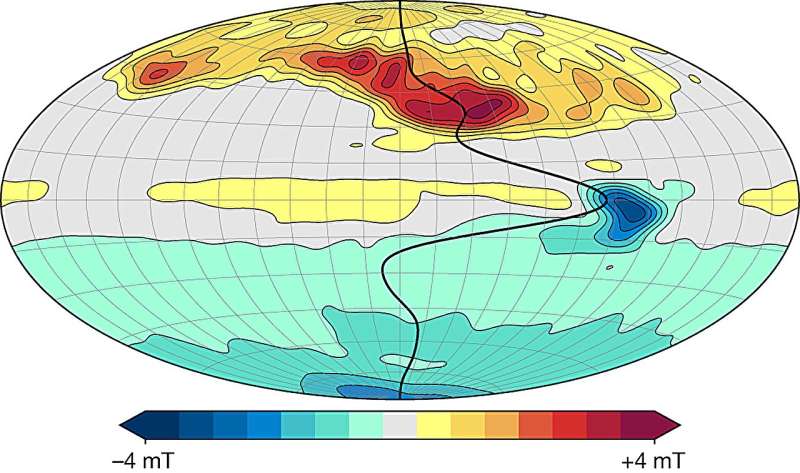March 7, 2024 report
This article has been reviewed according to Science X's editorial process and policies. Editors have highlighted the following attributes while ensuring the content's credibility:
fact-checked
peer-reviewed publication
trusted source
proofread
Jet in Jupiter's atmosphere found to fluctuate in roughly four-year periods

A team of planetary scientists affiliated with multiple institutions in the U.S. has found a jet in Jupiter's atmosphere that fluctuates in roughly four-year periods. In their paper published in the journal Nature, the group describes how they found the jet and studied its characteristics using data from the Juno spacecraft.
Prior research has shown that Jupiter has a large magnetosphere, with some parts of it extending as far as Saturn's orbit. The planet's magnetic field is approximately 20 times that of Earth's, making it a good target for research. Also making it a good target is the fact that Jupiter is a gas giant—it has no crust. That makes it much easier to study the dynamo that is responsible for maintaining the magnetosphere compared to the one that generates Earth's magnetic field.
NASA sent a probe designed specifically to measure and map the planet's magnetic field—the Juno probe was launched in 2011 and entered Jupiter's polar orbit in 2016. Since that time, it has been sending back valuable data regarding many aspects of the planet, including its magnetic field. In this new effort, the researchers focused on data surrounding an atmospheric jet.
Atmospheric jets are high-speed currents that move through a planet's atmosphere, similar in some respects to the jet stream on Earth. In this new effort, the research team was focused on a jet in a circular region on Jupiter called the "Great Blue Spot." By studying data describing characteristics of the jet, the researchers found that it had some wave-like fluctuations that repeated in nearly four-year periods.
The research team initially thought the fluctuations might be related to convection-driven flows from within the metallic hydrogen pool that makes up a part of the planet's inner atmosphere. But such a jet, they noted, would almost certainly have periodicity in centuries, not years. That led them to develop two alternate possibilities.
The first is that they are caused by oscillations that develop around the planet's axis. The second is that they are caused by Alfvén waves—the type that propagate along magnetic field lines. The researchers are hoping more data from Juno will better characterize the fluctuations they found, perhaps leading to a better understanding of the planet's dynamo.
More information: Jeremy Bloxham et al, A rapidly time-varying equatorial jet in Jupiter's deep interior, Nature (2024). DOI: 10.1038/s41586-024-07046-3
Journal information: Nature
© 2024 Science X Network





















